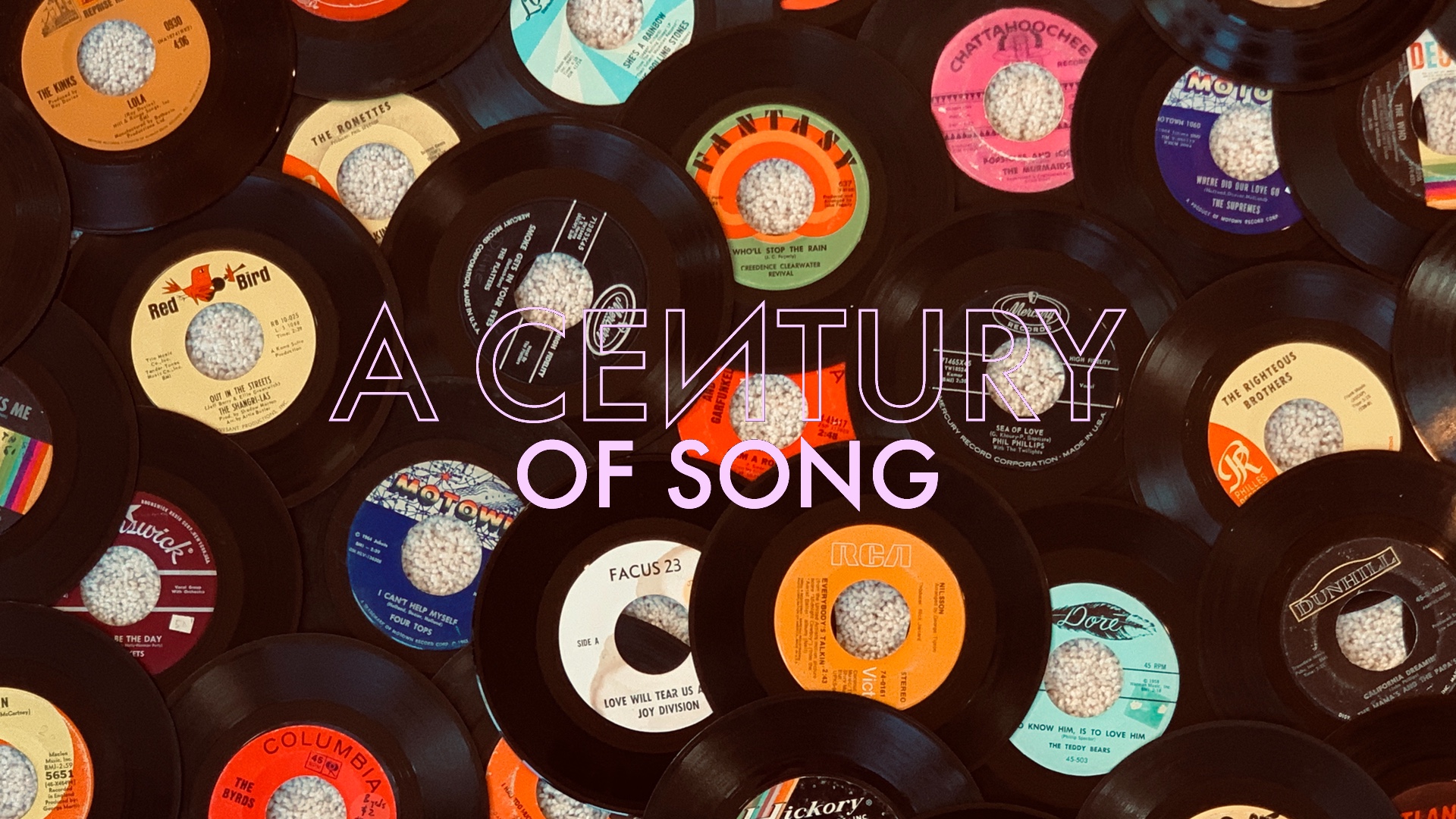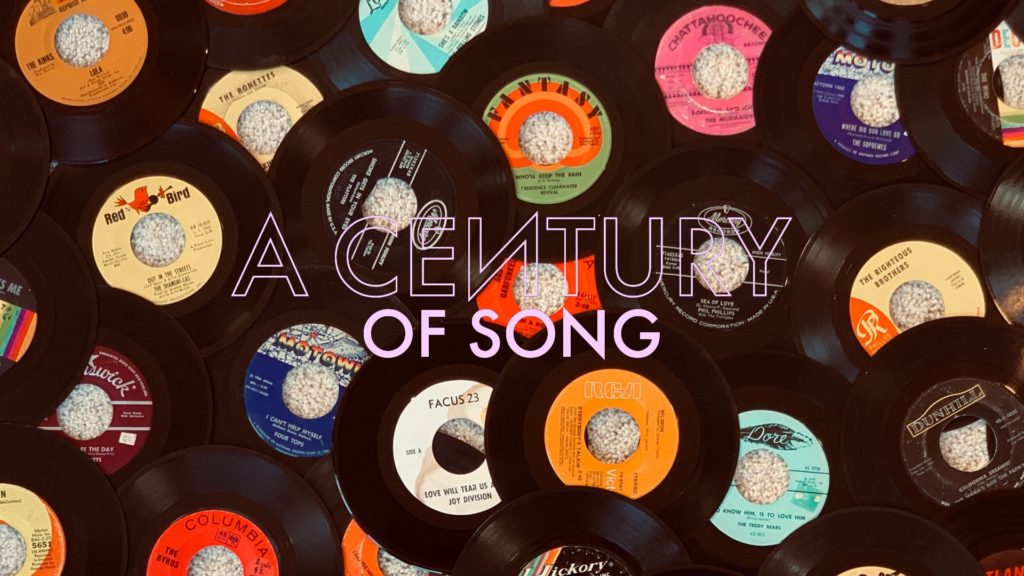
A Century of Song is an attempt to summarize 100 years of popular music through 1000 carefully chosen tracks. Included within this list are landmark singles, stellar album cuts, huge hits, hidden gems, and more than a few personal favorites. Read the introduction for the project here, and enjoy the embedded videos and Spotify playlist.


He arrived from Lubbock – a hundred miles to the east across the Texas border – crossing a mostly-barren stretch of Highway 84. It was late February. Though not even two years removed from graduating high school, Buddy Holly felt as if the clock was ticking on his chances of ever becoming a professional musician. Already cut loose from Decca Records following an unsuccessful two-single run, the session with Norman Petty – owner of the small Clovis, New Mexico studio that he and his still-teenaged bandmates found themselves in – felt like a last chance. By year’s end, Buddy Holly would be shaking the weathered hand of Ed Sullivan on prime-time television.
The song that launched Holly and The Crickets to the top of the charts in America and Britain had been recorded once before. Written by Holly – with help from drummer Jerry Allison – “That’ll Be the Day” was one of several songs shelved by Decca, following the poor performance of his first two singles. While his contract with Decca forbade Holly from releasing new versions of the material he had recorded for them, a loophole would be found.
Newly minted as Holly’s manager, Norman Petty sent his recording of “That’ll Be the Day” – intended only as a demo – to his contacts with Brunswick Records. Impressed with what they heard, Brunswick agreed to release the recording, and credited it to “The Crickets,” in order to avoid legal entanglements with Decca. In a similarly shrewd manner, Petty attached his name to the songwriting credits.
Petty’s underhanded claim of authorship notwithstanding, “That’ll Be the Day” was a rarity, in that it was one of the earliest examples of a hit record by a self-contained band. As it ascended up the charts during the summer and fall of 1957, Holly and The Crickets would quickly follow it up with a series of similarly excellent self-penned singles: “Words of Love,” “Peggy Sue,” “Not Fade Away” (#722), and “Maybe Baby” (#538).
Among the first wave of rock and roll superstars, Buddy Holly was a particularly innovative figure. Spending less than two years in the spotlight before his untimely death at the age of twenty-two, Holly would cover an impressive range of styles, and exert an unprecedented – for a pop star of his era – push for artistic control. The tragic loss of his talent makes for one of the most intriguing “what if?” cases in the history of pop music.
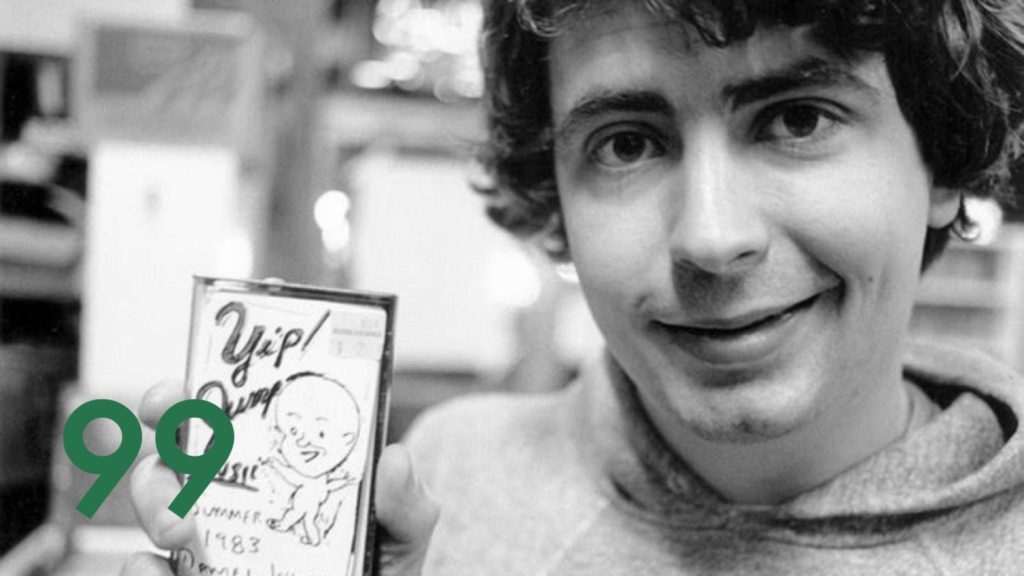

“She inspired a thousand songs. And then I knew I was an artist.”
-Daniel Johnson, The Devil and Daniel Johnston
Daniel Johnston enrolled at the East Liverpool campus of Kent State University in 1980. A short drive across the Ohio River from his parents’ home in New Cumberland, West Virginia, Kent State – and its art program – offered a far more appealing option than the West Texas bible college that Johnston had attended for just a few weeks before dropping out and returning home. It was at Kent State that Johnston would meet Laurie Allen.
Like Daniel, Laurie was an art student, though by her own admission, she lacked the creative spark of her classmates. She was friendly, attractive, and seemed genuinely interested in Daniel’s many artistic endeavors. He fell madly in love with her, but his feelings were not reciprocated. She had recently become engaged to an undertaker. While this put a damper on his hopes for a relationship, the poetic irony of his unrequited love proved to be a boon for Johnston’s creative process.
Ten years later, in between stints in mental hospitals, Daniel Johnston released 1990. Partly recorded in the New York studio of Mark Kramer – and padded out with recordings of concert and in-store appearances during Johnston’s ill-fated trip to the Big Apple – the record was a fascinating document of a brilliant-but-tortured artist. Though now a decade removed from their short-lived friendship, the album’s centerpiece was a touching ode to Johnston’s torrid one-sided love affair with Laurie Allen.
“Some Things Last a Long Time” straddles the line between art and artlessness. Like so much of Johnston’s work, there is a voyeuristic quality to the track that makes it utterly devastating. As deeply affecting as the content is, the real heartbreak comes in the form of the song’s faintly hopeful tone – aided no doubt by Johnston’s famously childlike vocals.
That tone seems to suggest that Johnston remained optimistic for a love that would never – and perhaps could never – be returned. Laurie Allen remained the love of Daniel Johnston’s life, up until the point of his death in 2019. The art that she inspired became his gift to the world – a gift that will continue to bring comfort, hope, and heartbreak for a long, long time.
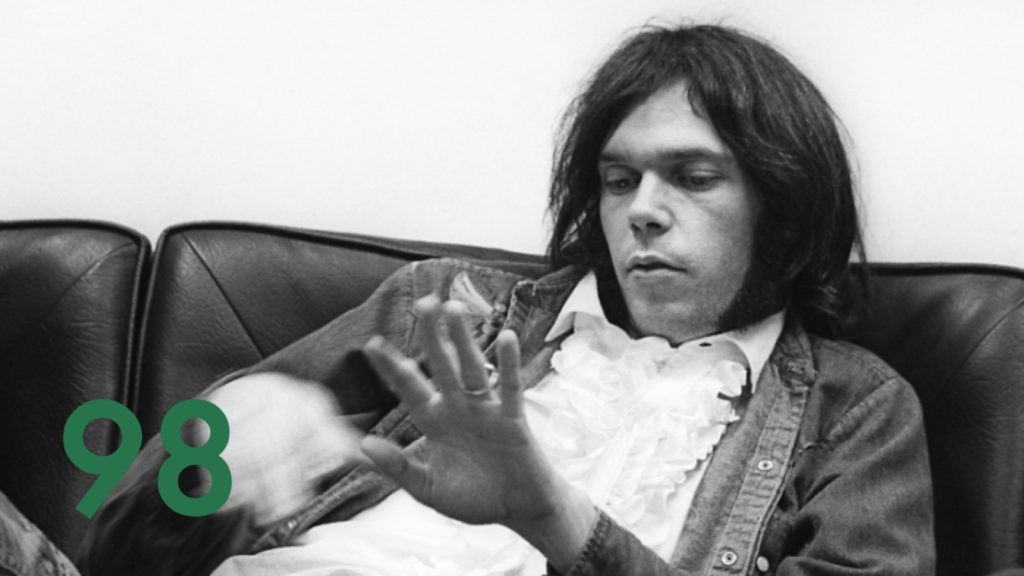

It’s wholly fitting that the most frequently recurring verb in Neil Young’s signature song is “searching.” In a career that now spans more than half of the century represented in this list, Young has been the definition of a restless creative spirit – an artist who, one suspects, could have kept cranking out albums full of songs like “Heart of Gold.” That is, if he wanted to.
Notably, it was the success of “Heart of Gold”‘s parent album – 1972’s Harvest – that led Neil Young to veer into what he himself described as “the ditch.” Having spent the first decade of his career chasing a more conventional form of success, Young would ultimately retreat from the trappings of superstardom, opting instead to pursue his increasingly idiosyncratic artistic whims.
With that said, let us not forget just how good Neil Young’s take on the “middle of the road” could be. Couched in a warmly inviting chord progression, a mournful harmonica line, and the tastefully minimal backing of The Stray Gators, “Heart of Gold” was as emotionally affecting as it was commercially viable.
While Young was far too unique of a talent to be pigeonholed, the rustic strains of “Heart of Gold” found him in his ideal state. His famously shaky voice is a perfect match for the track’s longing lyrics and poignant melody. Though he would have plenty of iconic moments as the leader of a gloriously fiery rock quartet, the vulnerability of “Heart of Gold” strikes at the core of his artistic voice.
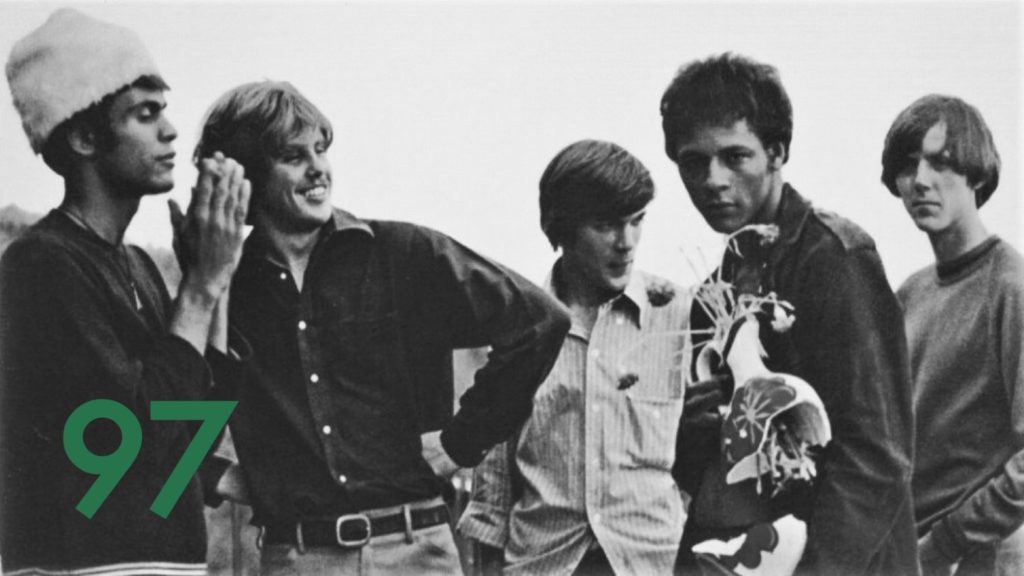

Plenty of great albums have been created in a state of crisis, but as the Los Angeles-based Love entered the studio in the summer of 1967 to record their third LP, the band was a walking parade of rock and roll cliches: drug use, creative differences, strained friendships, and disagreements with their record label.
As summer turned to fall, it became clear that the tensions surrounding the sessions had given the band’s work a keen sense of urgency. They were, in fact, creating a masterpiece. Among the final tracks recorded for their magnum opus, “Alone Again Or” would become the stunning album opener and first single from Forever Changes.
While Arthur Lee is generally regarded as Love’s leader, it was guitarist Bryan MacLean who penned the group’s greatest track. A perfect metaphor for the end of the so-called Summer of Love, “Alone Again Or” contains one of the most affecting lyrical refrains of its era:
Yeah, I heard a funny thing somebody said to me
You know that I could be in love with almost everyone
I think that people are the greatest fun
And I will be alone again tonight my dear
Coupled with MacLean’s wistful acoustic guitar pattern, his and Lee’s co-lead vocal, and the string and horn arrangements of David Angel, “Alone Again Or” is given a melancholic sense of drama. As a testament to both its song craft and production, the track never tips over into banality.
Forever Changes was a triumph for a band that is too-frequently left out among conversations of the era’s most innovative groups – say nothing of the fact that they were one of the few racially-integrated rock bands of their time. Passed over by even their own local scene and record label in favor of far-lesser groups such as The Doors, Love were a remarkable band. This is their pinnacle.


In the first five weeks of 1965, over 3000 Americans would be arrested for participating in demonstrations for civil rights. These protests were taking place roughly six months after the passage of the Civil Rights Act of 1964, and in the face of increasingly violent backlash by angry southern whites. The urgency of the movement was now focused on voting rights, and the planning for the famous Selma campaign was entering its final stages.
This is the context into which The Impressions released their greatest single. Inspired by the gospel music of his Chicago upbringing, Curtis Mayfield wrote “People Get Ready” as a call to action – one that drew upon the same kind of biblical imagery of Martin Luther King, Jr.’s soaring oratory. In fact, King himself would refer to Mayfield’s song as the unofficial anthem of the civil rights movement.
In the larger trajectory of his career, “People Get Ready” represented Mayfield’s most overt embrace yet of political themes in his own songwriting. Even by 1964, there was still significant risk for Black artists providing such direct commentary in their music, but Mayfield – alongside Sam Cooke and others – could no longer pretend to ignore the mood of the moment.
Like King’s speeches, the biblical nature of “People Get Ready” helped to make its message more palatable to a white audience, but its clear intention was to serve as an inspiration for the activists, marchers, and strategists within the Black community. What had already been addressed through law was yet to be achieved in practice, and the dulcet tones of “People Get Ready” aimed to both soothe and galvanize a movement that still had momentous challenges in its immediate future.
In the latter half of the decade that followed the release of this track, the movement would become increasingly fractured among those who adhered to King’s insistence upon nonviolent direct action, and those who found more relevance in less accommodating positions. Mayfield’s own subsequent music would reflect those fractures in an increasingly vital manner, but “People Get Ready” was the track where he truly began to find the voice in which to do so.
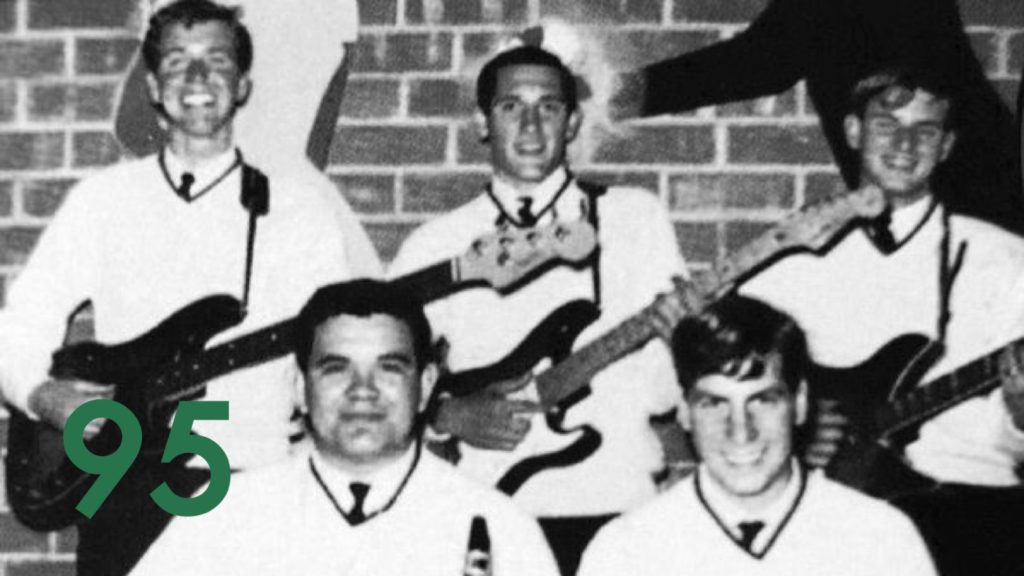

Among the many intriguing avenues of music nerd-dom, few are more inviting than that of sixties-era garage rock. Served by a plethora of reissue series – of both the legitimate and bootleg varieties – diving into the remarkably deep well of obscure sixties singles can be particularly rewarding from a musical point of view, and a fascinating case study in youth culture from a wildly-vibrant period of creativity.
Every garage rock aficionado has their own roster of beloved favorites, and I have included many of mine on this list. However, among the countless great blasts of Pacific Northwest proto-punk, Beatles/Stones-aping kids from the heartland, and wannabe scenesters from New York and Los Angeles, one track stands above the rest of the pack.
There was nothing particularly remarkable about The Dovers’ backstory. Like many other Southern California garage bands, they recorded for a tiny local label, scored some gigs, and even earned a degree of recognition among far more famous groups that emerged from the same scene. After releasing just eight songs, spread across the sides of four singles – including one released by Reprise – the group disbanded in late 1966.
Over a dozen years later, the two sides from The Dovers’ first single found their way onto the second volume of the Pebbles garage rock compilation series. While the A-side – “She’s Gone” – was a fantastic bit up up-tempo folk rock in its own right, it was the B-side that ranks among the greatest tracks of its time.
“What Am I Going to Do” is a simple song, but one that has both an undeniable charm and an undefinable ambience. Whereas most “lost” sixties classics tend to trade in an almost punk-ish sense of abandon, “What Am I Going to Do” is ultra melodic, in both its indelible 12-string guitar hook and chirping Wurlitzer reply. Despite its relatively full instrumental arrangement and backing harmonies, there is a spacious atmosphere that makes the song particularly unique among its homespun contemporaries.
I take pleasure in knowing that one of the most-read pieces from the first year of Strange Currencies was a feature on The Dovers. The cult of music fandom relies on discovering that which was overlooked the first time around. While I was far from the first person to sing effusive praise for “What Am I Going to Do,” I am hopeful that – if nothing else – I was able to pass it along to someone else.
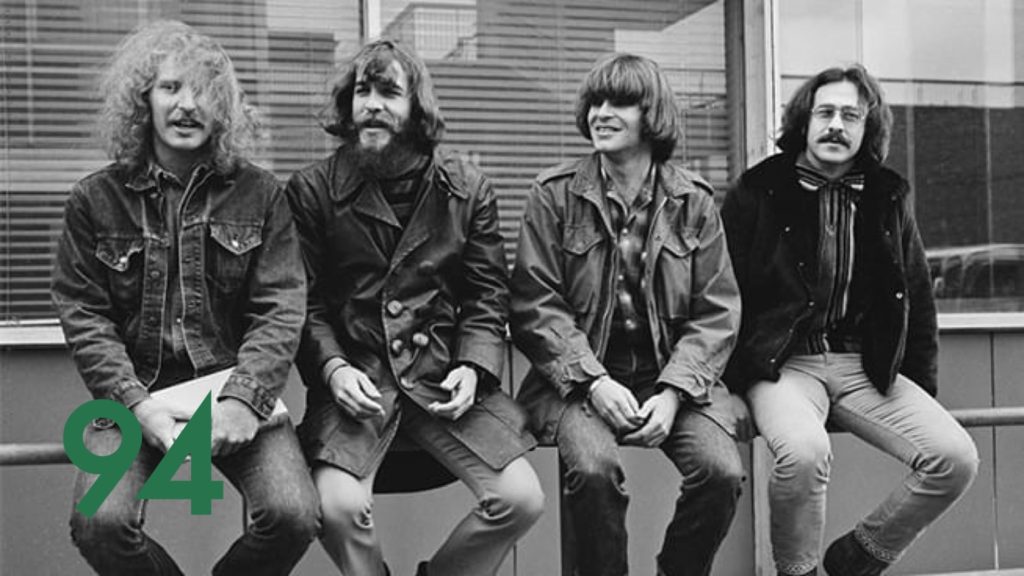

In 1963, in one of his most powerful songs, Bob Dylan warned a generation that was about to lean in on his every word that “A Hard Rain’s A-Gonna Fall.” By the end of the decade, the crises of Vietnam, urban decay, domestic political violence, and the long-simmering Cold War had become a veritable downpour.
For his own part, Dylan largely left politics behind shortly thereafter – turning away, first to impressionistic poetry, and then to his own take on Americana. While the void he left behind went largely unfilled, it was a relatively unassuming band from Northern California that would craft the most enduring political rock anthems of the next several years.
Led by John Fogerty, Creedence Clearwater Revival seemed a somewhat odd fit for the role. While their Bay Area background gave them some degree of credibility among rock’s insurgent wing, Fogerty’s everyman persona and affection for traditional musical forms seemingly kept them at arm’s length from that same group, while endearing them to a more mainstream audience.
Perhaps it was that cross-cultural appeal that allowed Creedence to act as something of a Trojan horse when it came to inserting political messaging into their songs. Or, perhaps the darkly-cryptic nature of Fogerty’s songs really was just a part of the folk/blues lineage, rather than commentary on contemporary America.
With that said, it’s hard not to see a political meaning behind “Who’ll Stop the Rain” – especially with its references to “Five-Year Plans and New Deals, wrapped in golden chains.” In time, the song would become inextricably linked to the Vietnam War, with its title refrain serving as a plea for an end to one of America’s longest and least-popular military campaigns.


I remain a big fan of John Darnielle’s post-boombox era recordings, but I often find myself wondering how much of the nuance in his particular brand of art is lost when surrounded by a group of strong musicians, and captured without the rough-hewn spontaneity of his earlier work. Though he is still utterly incapable of penning a bad song, the vitality of Darnielle’s lo-fi work remains unmatched in my eyes.
Darnielle’s great gift as a songwriter is to take an extremely specific situation and create something universal out of it. Nowhere in his catalog does he do so more effectively than on “The Best Ever Death Metal Band in Denton” – his crowning achievement. Jeff and Cyrus – united by death metal, separated by adults who don’t understand them, and hell-bent on getting revenge on those who punished them for “dreaming their dreams” – are a testament to anyone who has ever created art in the face of ridicule or indifference.
Darnielle has great affection for his characters – “radical empathy,” as described by Pitchfork in their review of 2012’s Transcendental Youth. His empathy for Jeff and Cyrus is clear and obvious. In actuality, their dream isn’t all that different from the dream of a man who spent a decade putting out “tape only” releases on tiny record labels, comprised of songs that he wrote and recorded after shifts as a nurse in a psychiatric hospital.
It’s fitting that this track appears on All Hail West Texas – the final lo-fi album of the Mountain Goats’ career, before their breakthrough to much larger recognition. The Mountain Goats’ story has a happier ending than that of Satan’s Fingers, or The Killers, or The Hospital Bombers – or whatever other name Jeff and Cyrus may have eventually settled on – but in this track, we’re reminded that John Darnielle will never stop rooting for the underdog, and that he’ll continue to articulate their struggle in ways that no other lyricist of his time can.


Pioneers have to be superlative. Every year when discussing Jackie Robinson in my history classes, I ask my students, “why was Robinson the right person to break baseball’s ‘color barrier’?” Having already read about Branch Rickey’s desire for a player who was strong enough to not fight back, some cite that as the primary reason for his selection. Others mention Robinson’s earlier efforts to stand up against segregation. While both are true, I always have to remind them that Jackie Robinson was also awesome at baseball. Perversely, in order to be accepted by even his own teammates, he had to excel at the highest level of the game. He never could have been a pioneer had he merely been average, or even above average. Pioneers don’t have that luxury.
Nina Simone was also a pioneer, and like Robinson, her mixture of hard work and transcendent talent undoubtedly led her to stand apart from her peers. From the time of her stellar debut album – 1959’s Little Girl Blue – Simone displayed an incomparable ability to carve even the most iconic of source material into her own image. The work of greats like Ellington, Gershwin, and Porter were putty in her hands, recast as wholly original material by a remarkably gifted singer and pianist.
Nina Simone wanted more. While she was classically trained, she knew that pop music paid the bills. Though her contract with the Colpix label gave her rare artistic control for a female musician, she fretted over abandoning the pop standards that had made her a star. However, by 1964, she had reached a breaking point. The first result of this was the stunning “Mississippi Goddam” (#113), a track written in the aftermath of both Medgar Evers’ murder and the bombing of the 16th Street Baptist Church in Birmingham that killed four young Black girls.
While not as explicitly linked to the Birmingham tragedy, the specter of that incident hangs over the haunting “Four Women,” Simone’s most poignant wholly-original composition. Whereas “Mississippi Goddam” met tragedy in the form of a tongue-in-cheek self-described “show tune,” “Four Women” was bleak, ominous, and uncompromising. A stirring portrait of four Black female archetypes, the track was unlike anything else in the history of pop music to date: impassioned, vivid, and unforgettable.
As richly rewarding as her career was, it’s frustrating to consider that Nina Simone recorded less than ten original songs during her life. The fact that two of them made the upper reaches of this list only leads one to wonder just how remarkable her career could have been, but just like Jackie Robinson – who didn’t set foot on a major league diamond until the age of twenty-eight – Nina Simone first had to prove herself to be extraordinary before she had the chance to fight.
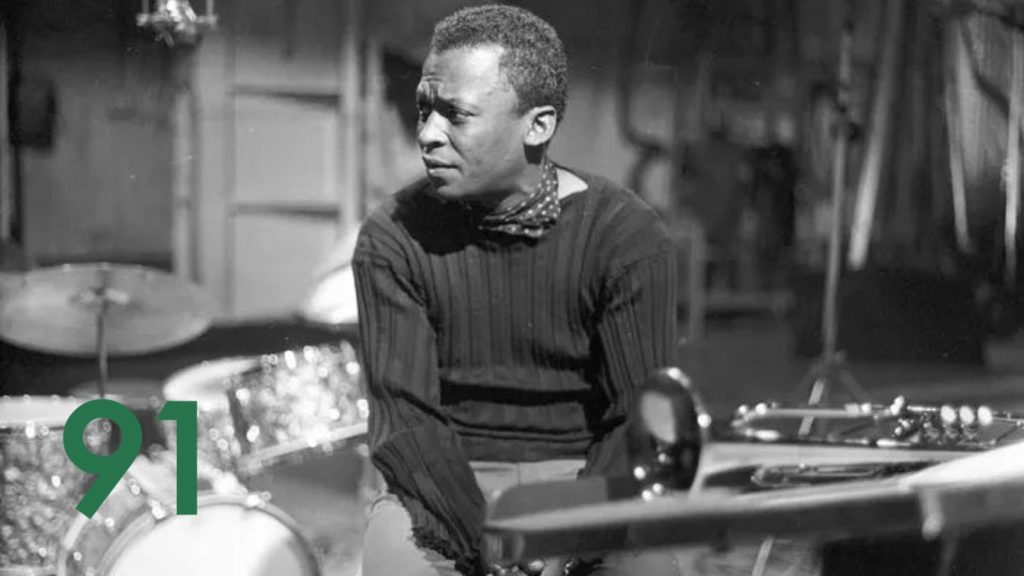

Too often, jazz is sold on its technical merits. Even to a relatively well-trained ear, the theory behind many of the genre’s boldest innovations are little more than technical jargon – a realm of musical academia that seems impenetrable to the average listener. Compare the way that jazz is usually written about to the way that pop is, and it should come as no surprise that fewer and fewer listeners are willing to put up with the “gatekeeping” that often defines jazz fandom. To those who feel as if jazz is not worth the effort, I say, “So What.”
Apparently, this track – and the exceptional record that it leads off – is one of those recordings that jazz scholars fall all over themselves to praise for its notable step in a decidedly-modern direction. Cool. To these ears, “So What,” and the entirety of Miles Davis’ 1959 landmark, Kind of Blue, is simply a superb listening experience – one that needs no prerequisite to enjoy.
It’s that accessibility that makes “So What” a centerpiece of the Jazz 101 curriculum. What you are hearing is several of the genre’s truly peerless talents – Davis (trumpet), Cannonball Adderley (alto sax), John Coltrane (tenor sax), Bill Evans (piano), Paul Chambers (bass), and Jimmy Cobb (drums) – in an impossibly laid back atmosphere, at no point sacrificing melody for the sake of showmanship.
To some, there are many other levels on which to enjoy Kind of Blue. I don’t begrudge them one bit; after all, I’ve spent an inordinate amount of time reading about what kind of microphones The Beatles used at Abbey Road, and loved every minute of it. However, some truly special works of art can transcend the boundaries between enjoyment and obsession. Kind of Blue is one of those.


